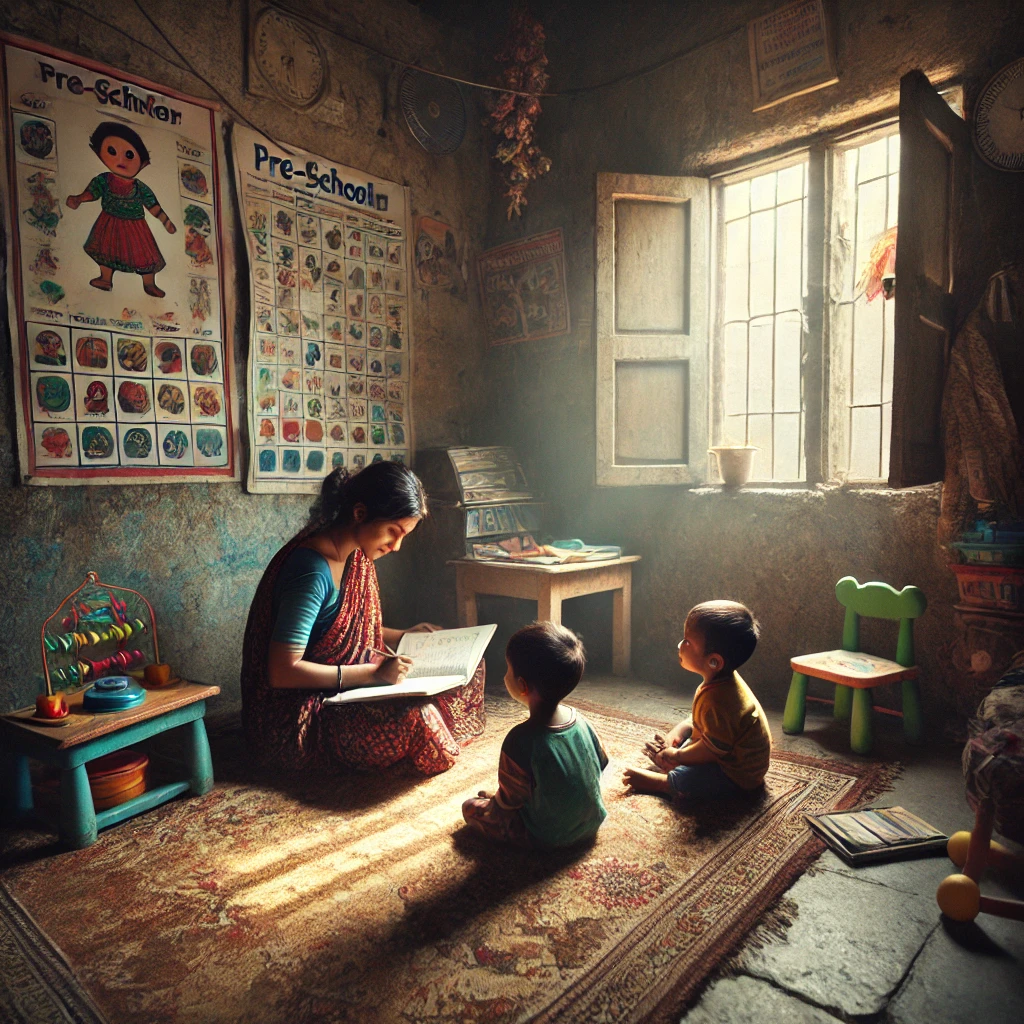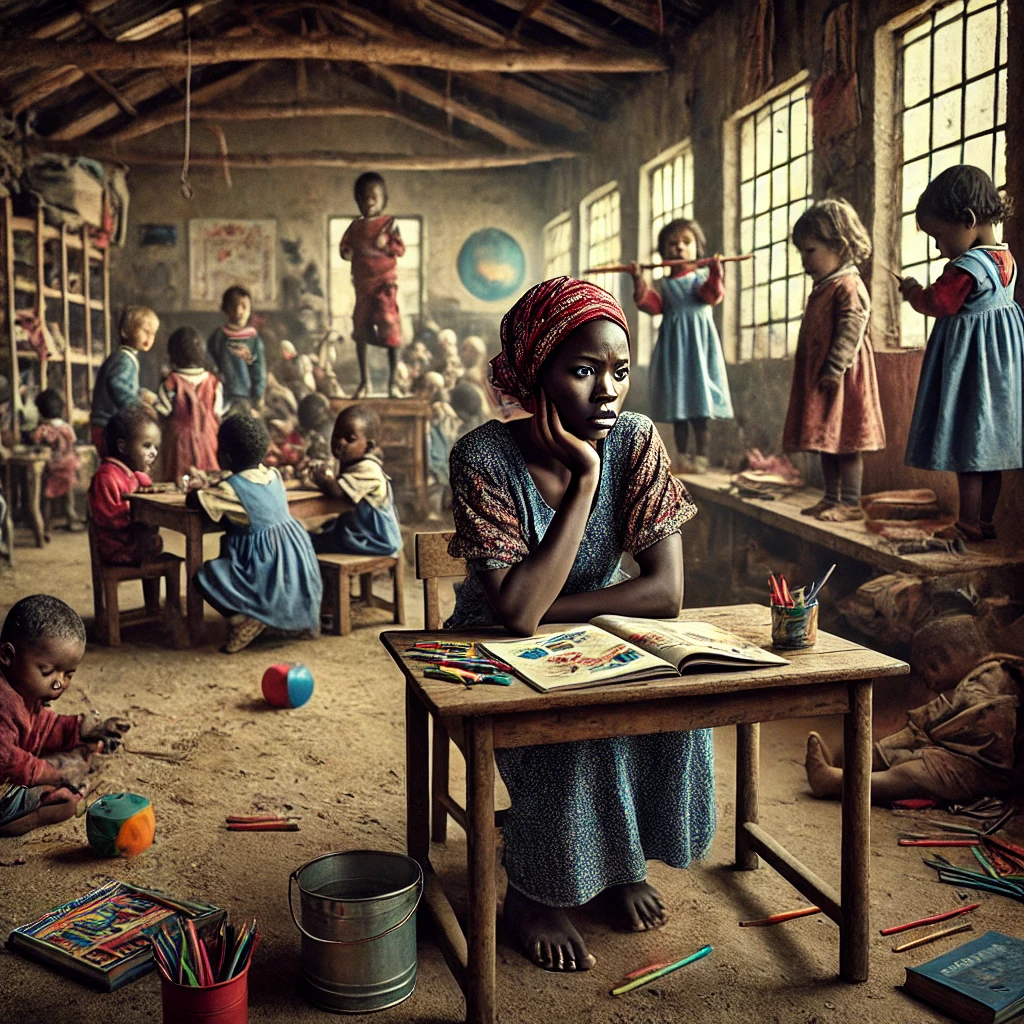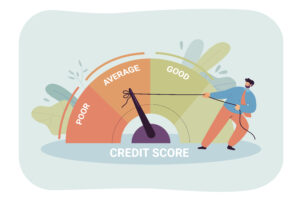Why is Pre-schooling Vital for Child Development?
The Pre-schooling Challenge: Empowering the Poor and Middle-Class Families
Why is Pre-schooling Vital for Child Development? because Education forms the backbone of a prosperous society, yet millions of children from poor and middle-class families are deprived of quality pre-schooling. Early childhood education is crucial, as it lays the groundwork for lifelong learning and success. Unfortunately, limited access to preschool programs often exacerbates social inequalities. In this article, we’ll explore the hurdles faced by underprivileged families, the benefits of quality preschool education, and practical solutions to bridge this gap.

Table of Contents
Read About:-The Heartbreaking Impact of Poverty on Childhood Immunization in Poor Low and Middle-Class Families
Understanding the Significance of Pre-schooling
Early childhood education is more than preparation for primary school. It cultivates cognitive, emotional, and social skills in children aged 0–5, providing a strong foundation for their future.
Why is Pre-schooling Vital for Child Development?
Preschool education sharpens children’s brains, enhances their curiosity, and fosters positive social interactions. For poor and middle-class families, quality pre-schooling could be a stepping stone to breaking the cycle of poverty.
- Cognitive stimulation aids early brain development.
- Encourages problem-solving and adaptability.
- Builds confidence and emotional resilience.
Statistics Highlighting the Preschool Gap
- According to UNESCO, only 50% of children in low-income families worldwide have access to pre-primary education.
- The World Bank reports that early childhood education boosts future earning potential by over 25%.
Read About:-Sprouting Sprouts: Heartwarming and Fun Money-Saving Tips for Little Investors (Age 0-5)
Challenges in Pre-schooling for Poor and Middle-Class Children
Children from economically disadvantaged families face unique obstacles, which prevent them from accessing preschool education.
Financial Barriers
- Cost of Enrolment: Many preschools charge fees that are beyond the reach of low-income families.
- Additional Expenses: Costs for books, uniforms, and transportation add to the financial burden.
Also Read:-10 Easy Magical and Clever Tricks of Money Sharing and Giving to Toddlers and Young Children

Infrastructure Deficits
In poor communities, preschools often lack adequate facilities and qualified staff.
Cultural Perceptions
Parents in poverty-stricken areas may undervalue education due to their own limited schooling experiences.
Impact of Poverty on Early Education
Poverty affects children’s physical, cognitive, and emotional development, impairing their readiness for school.
The Value of Pre-schooling for Children in Poverty
Investing in preschool education yields remarkable returns, particularly for impoverished families.
Read About:-Money Literacy for Girls and Maidy in the USA and India: A Path to Empowerment
Academic Benefits
Preschool nurtures skills like literacy and numeracy; ensuring children enter school ready to learn.
Economic Impact
- Increased educational attainment leads to better job opportunities.
- It reduces the economic divide by providing equal opportunities for all.
Social Transformation
Preschool education fosters inclusivity, breaking societal barriers and encouraging tolerance from an early age.
Solutions to Bridge the Preschool Gap
Governments, NGOs, and communities must work together to provide equitable pre-schooling opportunities.
Subsidized Preschool Programs
- Implement free or low-cost preschool options for low-income families.
- Provide financial aid to cover associated costs like transportation and materials.
Community-Driven Preschools
Empowering local communities to establish pre-schools using available resources.
Policy Reforms
Governments can create policies to ensure mandatory and free preschool education for children from underprivileged families.
Incorporating Technology
Digital tools can deliver early education to remote and resource-poor areas, providing affordable and interactive learning experiences.

Comparison Table: Preschool Challenges and Solutions
| Challenges | Proposed Solutions |
| High costs | Subsidized/free education programs |
| Lack of infrastructure | Community and NGO-driven initiatives |
| Unqualified staff | Training and capacity-building programs |
| Parental misconceptions | Awareness campaigns on the value of pre-schooling |
Visualizing the Preschool Impact
Chart: Long-Term Benefits of Preschool Education
- Academic Achievement: Higher grades, better school readiness.
- Economic Gains: 25% higher income potential in adulthood.
- Social Balance: Reduced inequality and enhanced inclusivity.
Real-Life Success Story
Meet Priya, a five-year-old from a rural village whose parents couldn’t afford private schooling. With the help of an NGO-driven preschool program, Priya now excels in her primary school, setting a bright future for herself and inspiring her community.
FAQs
What are the challenges faced by poor children during pre-schooling?
Poor infrastructure, financial constraints, and parental lack of awareness are key barriers.
How does poverty affect early childhood education?
Poverty limits access to quality education, stunting children’s cognitive and emotional growth.
How can preschool education reduce poverty?
By providing equal opportunities for skill development and fostering inclusivity, pre-schooling minimizes socioeconomic disparities.
What is the added value of preschool for poor children?
It offers cognitive stimulation, social skill development, and the foundation for future success.
How can governments support pre-schooling for low-income children?
Governments can implement free or subsidized programs and invest in quality infrastructure and teacher training.
Why is quality pre-schooling essential for children in poverty?
It helps break the cycle of poverty by empowering children with the skills needed for lifelong success.
Conclusion
Quality preschool education for children from poor and middle-class families is not a luxury; it’s a necessity. By addressing financial and social barriers, we can ensure every child has a fair start in life. Governments, communities, and organizations must unite to invest in early education, shaping a brighter and more equitable future.












